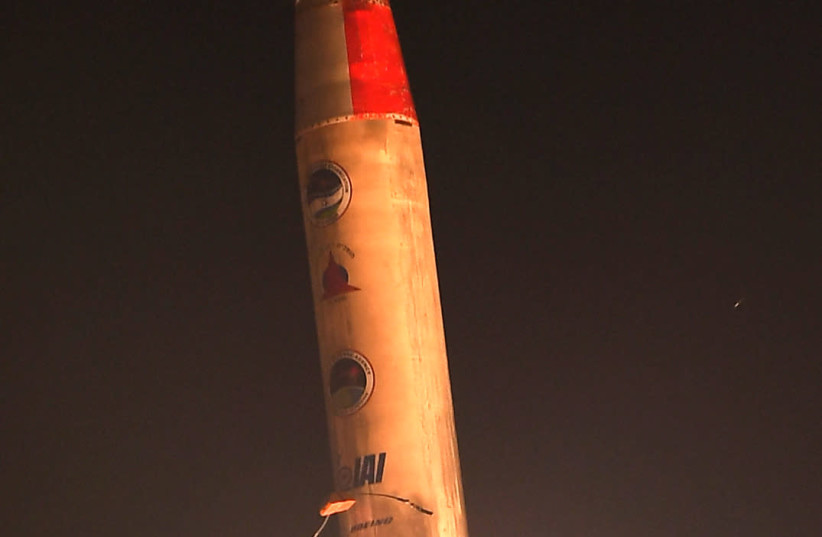Why nearly intact Iranian missiles are being found in the Negev
Travelers who were walking in the Arad area of the Judean desert, enjoying the starry night, were surprised to find themselves standing next to a ballistic missile, a remnant of the major attack that Tehran launched against Israel, which included more than 300 suicide drones, cruise missiles, and ballistic missiles.
This is not the first missile discovered in the south since the attack. Similar missiles were discovered nearby in the Dead Sea area immediately after.
So how is it that civilians are still finding missiles on the ground ten days after the attack, especially after the IDF spokesman stated that Israel’s air defense system successfully intercepted 99% of them?
Iranian missiles: how do they work?
The IDF made the decision to disclose this information since some missiles successfully struck the Nevatim base, and this was reported abroad. Despite not responding directly to reports of a transport plane being hit in the attack, the IDF did provide an explanation for the nearly intact missiles discovered in the Negev.
The missile found this week is the Iranian Imad, one of the two types of ballistic missiles used in the attack, along with the Haybar Shekan. The Imad is an advanced version of the old Shehab 3 missile, which itself is based on the North Korean Rodong.

Iran launched 110 ballistic missiles at Israel. Each missile contains rocket engines that provide it with the necessary speed to exit the atmosphere, large fuel tanks designed to allow the engines to travel long distances, a control system box, and a warhead, which contains the explosive material.
The Imad’s warhead is relatively sophisticated: It contains 750 kg of explosives, capable of causing damage even to protected structures. The missile’s fins allow it to hit the target accurately and maneuver in an attempt to mislead the defense systems. The missile’s range reaches about 1,700 kilometers, and it is designed to hit the target accurately to 10 meters.
“The warhead is the payload that the missile carries, the whole purpose of which is to put it into orbit on the way to the target,” explains Tal Inbar, an expert on the Iranian missile program. “The engine accelerates the missile, and it flies to Israel on a ballistic trajectory, at a maximum height of 110-140 km above the ground. Somewhere over western Iran or over Iraq, the warhead separates from the heavy and clumsy missile casing that carries it so that it can easily maneuver to the target. The warhead is the dangerous part that needs to be intercepted. The rest of the missile reaches Israel without fuel, and as long as it falls into uninhabited territory, it will not cause damage.
“The cost of these missiles is high: an Arrow-2 costs about 3 million dollars. The goal is to destroy the target with as few interceptors as possible. That’s why a lot of effort has been put into developing the ability of Israeli air defense systems to distinguish between the warhead and the missile itself. This enables us to launch an interceptor at the right target and not waste an interceptor on the missile itself, as long as it is not about to land in a populated area.”
Therefore, the missiles launched towards Nevatim and other targets in the Negev fell in the South but far from the targets they were aimed at. When they are lying in the Negev devoid of the warheads, they are just metal scraps, which the IDF slowly collects for research and analysis of the enemy’s capabilities.





Comments are closed.